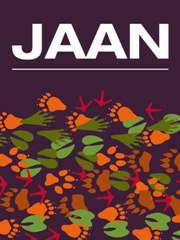Crossref Citations
This article has been cited by the following publications. This list is generated based on data provided by
Crossref.
Corrigan, A.
Fay, B.J.
Corcionivoschi, N.
and
Murphy, R.A.
2017.
Effect of yeast mannan-rich fractions on reducing Campylobacter colonization in broiler chickens.
Journal of Applied Poultry Research,
Vol. 26,
Issue. 3,
p.
350.
Froehlich, K. A.
Abdelsalam, K. W.
Chase, C.
Koppien-Fox, J.
and
Casper, D. P.
2017.
Evaluation of essential oils and prebiotics for newborn dairy calves1.
Journal of Animal Science,
Vol. 95,
Issue. 8,
p.
3772.
Faseleh Jahromi, Mohammd
Shokryazdan, Parisa
Idrus, Zulkifli
Ebrahimi, Rohollah
Bashokouh, Fatemeh
and
Liang, Juan Boo
2017.
Modulation of Immune Function in Rats Using Oligosaccharides Extracted from Palm Kernel Cake.
BioMed Research International,
Vol. 2017,
Issue. ,
p.
1.
Pukrop, Josey R
Brennan, Kristen M
Funnell, Bethany J
and
Schoonmaker, Jon P
2018.
Effect of a hydrolyzed mannan- and glucan-rich yeast fraction on performance and health status of newly received feedlot cattle1.
Journal of Animal Science,
Vol. 96,
Issue. 9,
p.
3955.
Zampiga, Marco
Flees, Joshua
Meluzzi, Adele
Dridi, Sami
and
Sirri, Federico
2018.
Application of omics technologies for a deeper insight into quali-quantitative production traits in broiler chickens: A review.
Journal of Animal Science and Biotechnology,
Vol. 9,
Issue. 1,
Corrigan, A.
Russell, N.
Welge, M.
Auvil, L.
Bushell, C.
White, B. A.
and
Murphy, R. A.
2018.
The use of random forests modelling to detect yeast-mannan sensitive bacterial changes in the broiler cecum.
Scientific Reports,
Vol. 8,
Issue. 1,
Hasan, Shah
Junnikkala, Sami
Peltoniemi, Olli
Paulin, Lars
Lyyski, Annina
Vuorenmaa, Juhani
Oliviero, Claudio
and
Smidt, Hauke
2018.
Dietary supplementation with yeast hydrolysate in pregnancy influences colostrum yield and gut microbiota of sows and piglets after birth.
PLOS ONE,
Vol. 13,
Issue. 5,
p.
e0197586.
WU, Ziping
2018.
Antimicrobial use in food animal production: situation analysis and contributing factors.
Frontiers of Agricultural Science and Engineering,
Vol.
5
,
Issue.
3
,
p.
301
.
Ogunade, Ibukun
Jiang, Yun
Adeyemi, James
Oliveira, Andre
Vyas, Diwakar
and
Adesogan, Adegbola
2018.
Biomarker of Aflatoxin Ingestion: 1H NMR-Based Plasma Metabolomics of Dairy Cows Fed Aflatoxin B1 with or without Sequestering Agents.
Toxins,
Vol. 10,
Issue. 12,
p.
545.
Zheng, Jialin
Li, Heng
Zhang, Xiaojuan
Jiang, Min
Luo, Chunqin
Lu, Zhenming
Xu, Zhenghong
and
Shi, Jinsong
2018.
Prebiotic Mannan-Oligosaccharides Augment the Hypoglycemic Effects of Metformin in Correlation with Modulating Gut Microbiota.
Journal of Agricultural and Food Chemistry,
Vol. 66,
Issue. 23,
p.
5821.
Shurson, G.C.
2018.
Yeast and yeast derivatives in feed additives and ingredients: Sources, characteristics, animal responses, and quantification methods.
Animal Feed Science and Technology,
Vol. 235,
Issue. ,
p.
60.
Prayoonthien, Phatcharin
Nitisinprasert, Sunee
and
Keawsompong, Suttipun
2018.
In vitro fermentation of copra meal hydrolysate by chicken microbiota.
3 Biotech,
Vol. 8,
Issue. 1,
Ayyat, Mohamed Salah
Ayyat, Ahmed Mohamed Nabil
Al-Sagheer, Adham Abdullah
and
El-Hais, Abd El-Aziz Mohamed
2018.
Effect of some safe feed additives on growth performance, blood biochemistry, and bioaccumulation of aflatoxin residues of Nile tilapia fed aflatoxin-B1 contaminated diet.
Aquaculture,
Vol. 495,
Issue. ,
p.
27.
Ubiparip, Zorica
Beerens, Koen
Franceus, Jorick
Vercauteren, Ronny
and
Desmet, Tom
2018.
Thermostable alpha-glucan phosphorylases: characteristics and industrial applications.
Applied Microbiology and Biotechnology,
Vol. 102,
Issue. 19,
p.
8187.
Park, Jungwoo
Jung, Sungwoo
and
Carey, JohnB.
2019.
Effects of a Commercial Mannan-Oligosaccharide Product on Growth Performance, Intestinal Histomorphology, and Amino Acid Digestibility in White Pekin Ducks.
Journal of Applied Poultry Research,
Vol. 28,
Issue. 1,
p.
72.
Browne, Niall
Traynor, Aimee
and
Horgan, Karina A.
2019.
Mannan rich fraction from yeast modulates inflammatory responses in intestinal cells (HT-29) exposed toEscherichia coli.
Journal of Applied Animal Nutrition,
Vol. 7,
Issue. ,
Duan, Xudong
Tian, Gang
Chen, Daiwen
Huang, Linhui
Zhang, Dan
Zheng, Ping
Mao, Xiangbing
Yu, Jie
He, Jun
Huang, Zhiqing
and
Yu, Bing
2019.
Mannan oligosaccharide supplementation in diets of sow and (or) their offspring improved immunity and regulated intestinal bacteria in piglet1.
Journal of Animal Science,
Vol. 97,
Issue. 11,
p.
4548.
Upadhaya, Santi D
Bravo de Laguna, Fernando
Bertaud, Bruno
and
Kim, In‐Ho
2019.
Multi‐strain yeast fraction product supplementation can alleviate weaning stress and improve performance and health of piglets raised under low sanitary conditions.
Journal of the Science of Food and Agriculture,
Vol. 99,
Issue. 13,
p.
6076.
Prayoonthien, Phatcharin
Rastall, Robert A.
Kolida, Sofia
Nitisinprasert, Sunee
and
Keawsompong, Suttipun
2019.
In vitro fermentation of copra meal hydrolysate by human fecal microbiota.
3 Biotech,
Vol. 9,
Issue. 3,
Hafner, Dóra
Tuboly, Tamás
Mézes, Miklós
Bloch-Bodnár, Zsófia
Balogh, Krisztián
Vántus, Viola
Bóta, Brigitta
Szabó-Fodor, Judit
Matics, Zsolt
Szabó, András
and
Kovács, Melinda
2019.
Effect of feedingBacillus cereusvar.toyoiand/or mannan oligosaccharide (MOS) on blood clinical chemistry, oxidative stress, immune response and genotoxicity in T-2 toxin exposed rabbits.
Italian Journal of Animal Science,
Vol. 18,
Issue. 1,
p.
1239.


